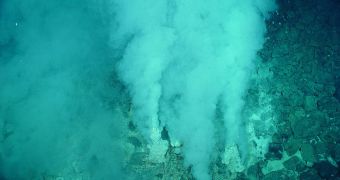A group of investigators has recently discovered the existence of a new species of archaebacteria inside the oceans, at a depth exceeding the height of Mount Everest. Temperatures and pressures here are way beyond anything we are accustomed to, yet somehow these creatures manage to endure.
This is the so-called hadal zone of the ocean, which lies at about 11,000 meters below the surface. The sheer amount of water above it exerts a pressure of 1,000 bar, or around ton per square centimeter.
This is the equivalent of a hydrostatic pressure level reaching 120 megapascal (Mpa), or about 1000 times higher than the pressure the atmosphere exerts at sea levels. Temperatures are extremely low at most locations, and no sunlight penetrates the water.
A lack of sunlight means a lack of photosynthetic organisms, such as plants, phytoplankton and others. No viable food chains can therefore develop at such tremendous depths. Yet, life can endure in some ways.
This was evidenced in the new study, which uncovered the existence of Pyrococcus CH1, an archaebacteria that can thrive in a temperature range spanning from 80 to 105 degrees Celsius.
At certain locations on the ocean floor, temperatures are no longer frigid, but actually become really hot. This happens at areas where hydrothermal vents expel hot gases from the mantle below.
Temperature levels here can reach up to 400 degrees Celsius, and yet life endures around them. In this study, it was shown that this happens at tremendous depths too, not just closer to the surface.
Researchers discovered the microorganism on a ridge located at the middle of the Atlantic Ocean. The bacteria was identified following a six-week sampling effort by an international science group.
Experts from the Institute of Oceanography of Xiamen, in China, and the Microbiology of Extreme Environments Laboratory, at IFREMER Brest. Scientist from the Earth Science Laboratory also participated in the work, Daily Galaxy reports.
The organism was found at a depth of 4,100 meters, the largest at which hydrothermal vents have been found thus far. The main implication of this discovery is the extension of the physical and chemical limits that allow for existence of life on our planet.
Such investigations are very interesting to astrobiologists as well, because they hint at conditions that may exist beneath the thick ice crusts of places such Europa and Enceladus. These moons, orbiting Jupiter and Saturn, respectively, are the prime targets for finding life in the solar system.

 14 DAY TRIAL //
14 DAY TRIAL //